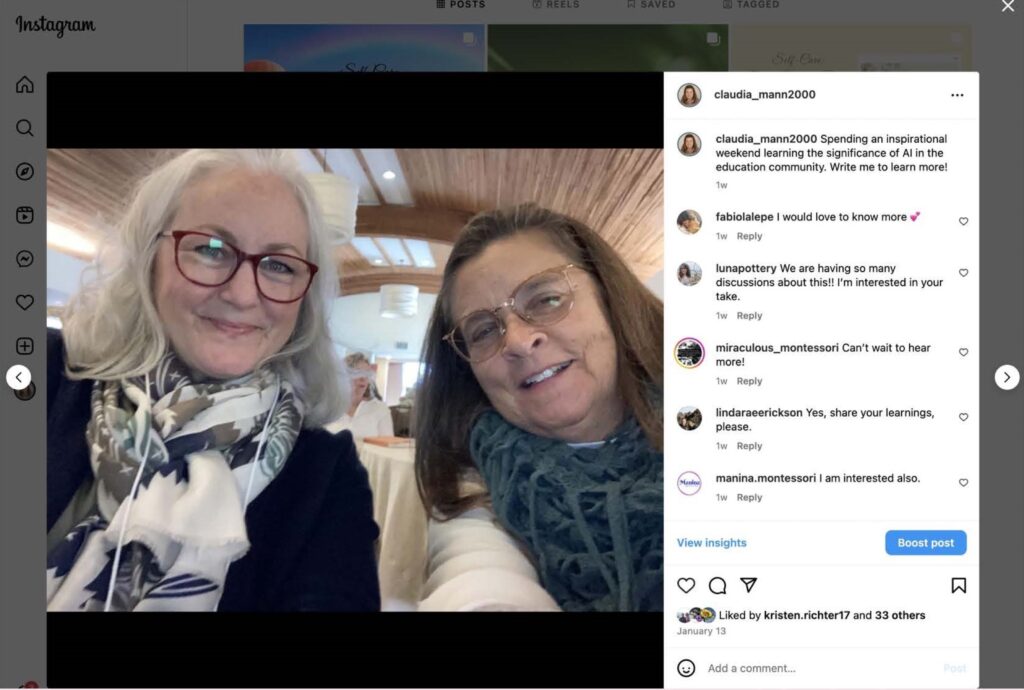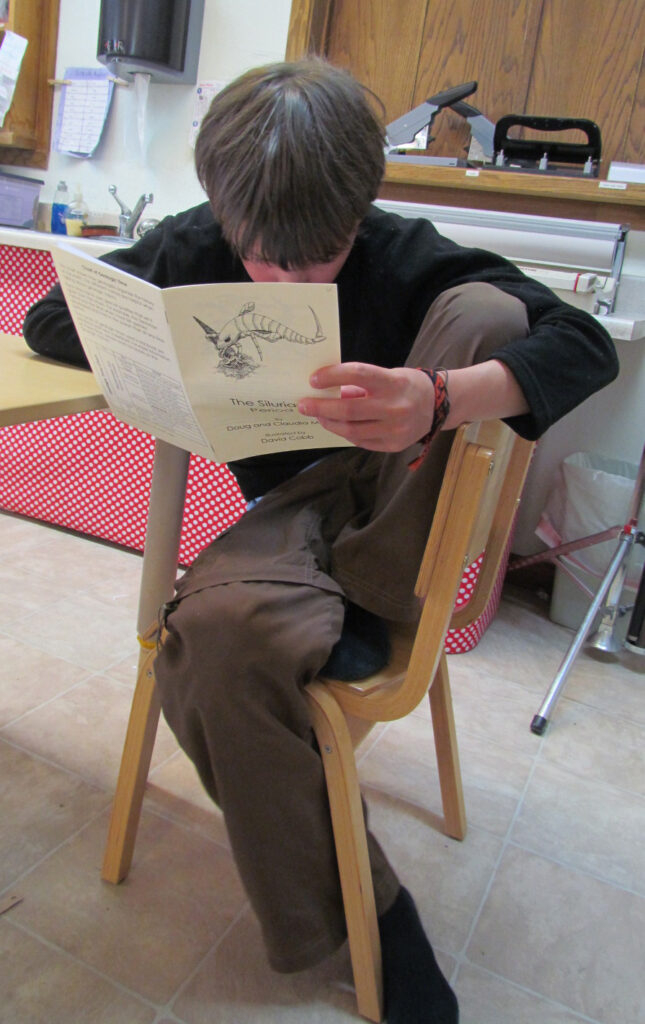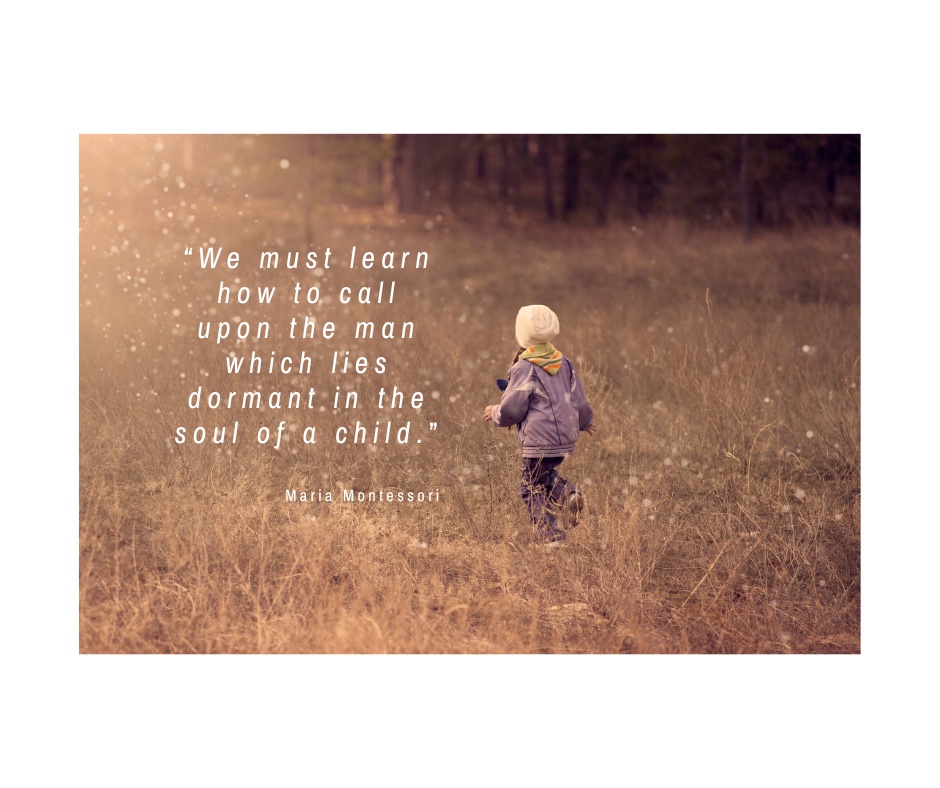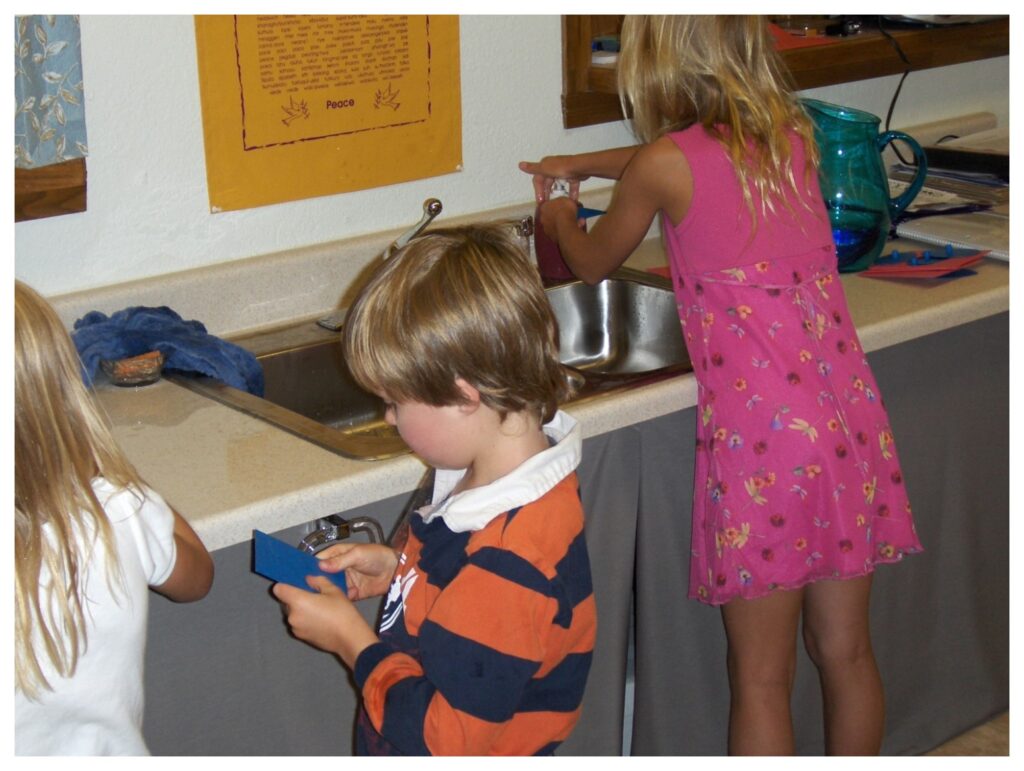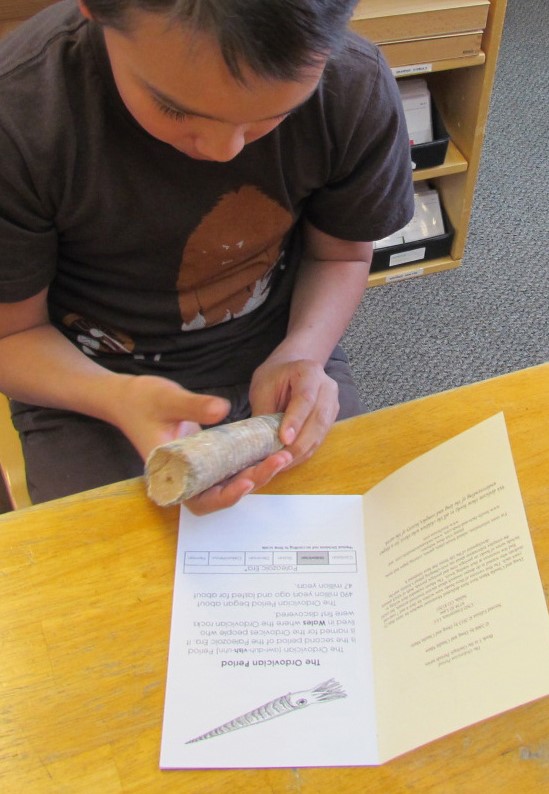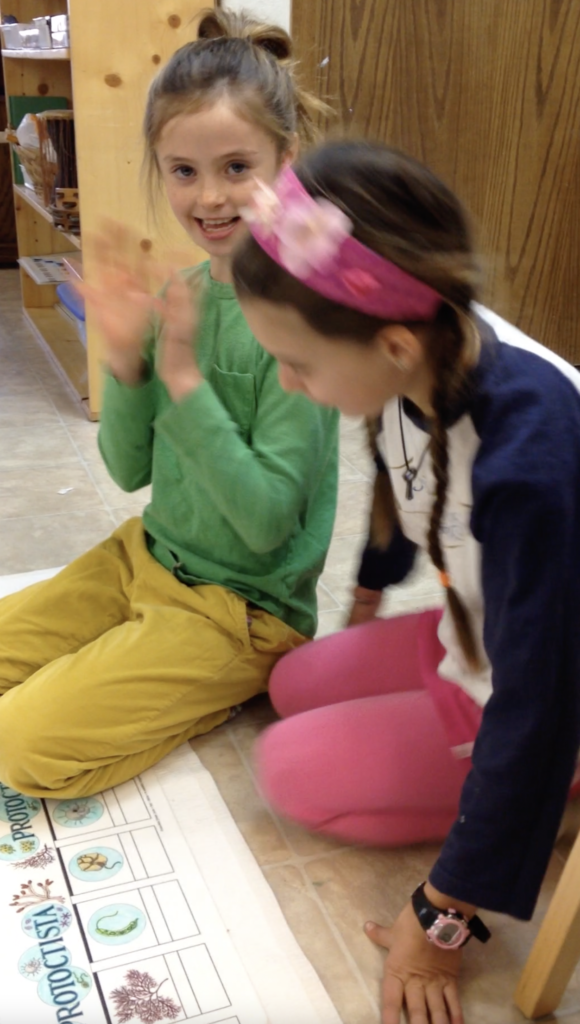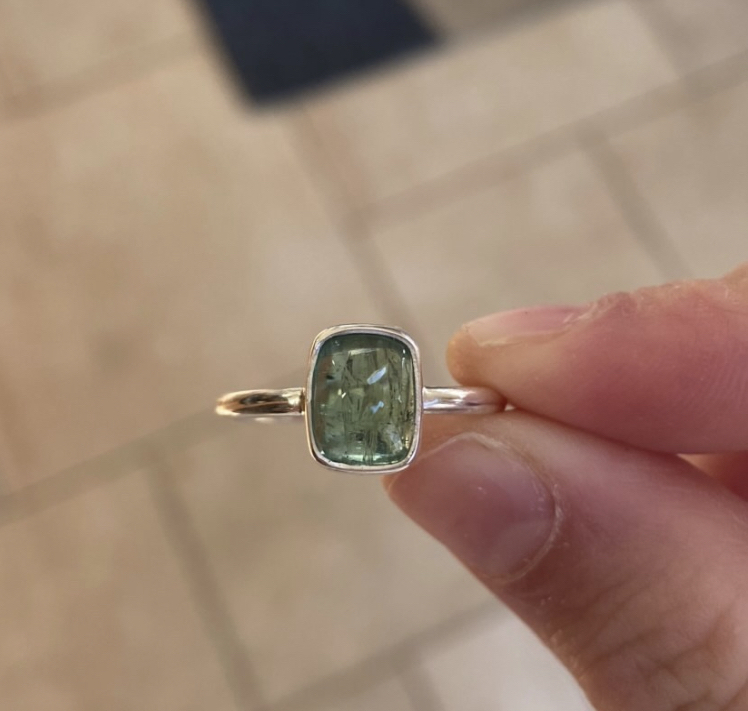Our care of the child should be governed, not by the desire ‘to make him learn things’, but by the endeavor always to keep burning within him that light which is called intelligence.”
Dr. Maria Montessori, Spontaneous Activity in Education, pg. 185
With your classroom routines and norms adequately reviewed and in place (You did that, when you returned in January, right?), are you ready to reflect upon your own growth and potential? In Spontaneous Activity in Education, Maria Montessori wrote:
“…endeavor always to keep burning within him that light which is called intelligence.”
But can we truly maintain this flame without re-energizing our own light of intelligence? In this blog post, I’ll explore the relationship between one’s personal growth and classroom vitality, first drawing upon an example from one of my mentees and then reflecting on the impact of my own learning experiences in January.
MM is not a new Montessori guide, but her extensive knowledge has not kept her from facing a challenging year. Getting to know a new community of learners who are outside the scope of her training and experience has offered many trials. In our mentoring conversations, I’d been encouraging her to bring her passions into the classroom, seeking to find joy by sharing personal interests with her students. She found a way to do just that! You see, MM loves growing and foraging for herbs and making herbal teas. She brought some of her herbs to the children, taking note of the delicate leaves. And then what? She shared the leaf cabinet! Way to go, MM! This simple act of merging her love of herbs with the work at school created connections that undoubtedly brought her smiles along with much needed encouragement…re-energized!
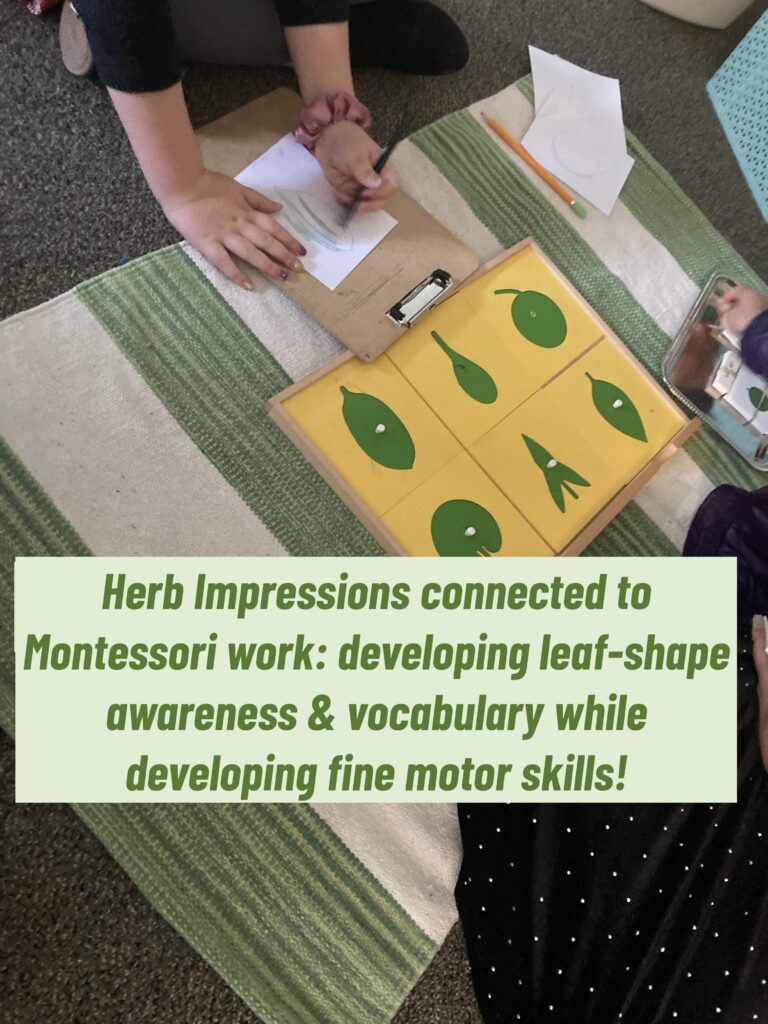
January’s been the perfect month for embarking on my own revitalizing journey of learning and self-discovery. The American Montessori Society’s Labposium infused new energy and confidence to my experiences with Artificial Intelligence. Our keynote speaker, Dr. Nita Faraday, not only taught technique, but she also informed our understanding of the moral and safety implications that all us teachers need to consider when using any aspect of this not-as-new-as you-think technology. The work groups of attendees ventured into brainstorming strengths, challenges and uses of AI in the different areas in which we work: classrooms, school leadership, teacher education programs, and consultations. Learning among friends: the BEST. REVITALIZATION. EVER!

Geoffrey Bishop’s Call-to-Action: Take a picture of yourself and the person next to you and share with the world!
Here’s mine with Laurie Stockton-Moreno, Director of the Center for Montessori Education, Trine University; Angola, Indiana.
Join me on 2/8/2024 for an update!
The truth is the last few years haven’t been easy. While I haven’t lost any of my passion for spreading the word about the possibility of Montessori education, I know that I’ve had to immerse myself in restorative practices. Re-energizing the flame of our own intelligence requires nurturing our physical and mental well-being. I’ve embraced this sentiment with webinars and e-courses to bring new ideas and practices to enhance my work. Encouraging the spiritual transformation of Montessori guides, requires continual stretching of my own spiritual growth and development. To this end, I’ve established some “New Rules” for myself. For example, at the end of my work period, whenever that might fall on the clock, I take some time to review the day’s successes and plan for the next. Then, I close my eyes in a brief personal meditation and moment of gratitude. Each morning, I reflect on the plans, repeat a daily affirmation, and set my intentions for focus, balance, and calm throughout the day ahead. Already, I’m finding renewed ability to manage my to-do lists while gratefully spending time with my family and the menagerie that has developed around our little slice of heaven. (Except, of course, when those kittens insist on my attention!)

By prioritizing self-care and incorporating loving habits into our daily lives, I believe we can all maintain an optimal state of vitality and effectively nurture our intelligence. If you haven’t already, I hope you’ll take advantage of the free e-guide and webinar: Finding Calm Amidst Chaos. I received this note from a teacher who viewed it recently:
“I watched your webinar yesterday and implemented it today:
I’ll be practicing it throughout my days, returning to watch the webinar often.
You touched my soul.”
As we embrace the new year, let us all remember the wise words of Maria Montessori. To truly keep that light of intelligence burning within us, we must make the effort to re-energize it. Drawing inspiration from the many mentors who surround us, I hope you’ll take some steps to actively pursue new knowledge, explore your interests, and prioritize self-care. By doing so, you will re-ignite the flame within and set yourself on the joyful path of growth and self-discovery in the year ahead.

